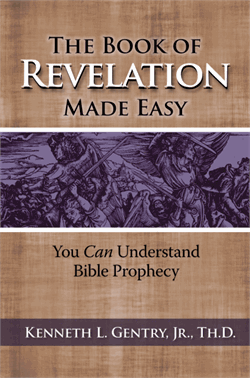Bible Prophecy Under the Microscope-Episode 50
Gary discusses a short video clip by John MacArthur regarding the chronology of the book of Revelation.
Perhaps the leading interpretive principle for understanding any document can be summarized in three words: “Context. Context. Context.” Before we arrive at Revelation 1:7 upon opening John’s book, we must pass through verses 1 and 3. And as we have seen, these two verses emphatically declare that the events expected in Revelation “must shortly take place” (Rev. 1:1) because “the time is near” (Rev. 1:3).
We must carefully note that not only does John declare the events of his book near, but in those nearness declarations, he relates the purpose of his writing the book and applies that purpose to his first century audience. Revelation 1:1 informs the original recipients that he is writing about “the things which must shortly take place.” One would think that if he is writing about “the things which must shortly take place,” this would involve his very theme. It would be strikingly odd if John were to declare temporal nearness for the very purpose of his writing, then give a theme which reached thousands of years beyond his day. After all, does he not declare the nearness of “the time” as reason why his first century readers must read, hear, and “heed the things which are written in it” (Rev. 1:3)? Why would he urge them to heed the things written if his thematic purpose lies untold centuries in the future?
So then, just four verses before John states the theme of Revelation, he declares the events near and applies them to his original audience.

The Book of Revelation Made Easy
With 22 chapters of symbolism, mysterious characters, and apocalyptic drama—all told in “picture language” unmatched in the rest of Scripture—the book of Revelation is difficult enough on its own. But in ignoring the Apostle John’s clear directives for interpreting his prophecies, contemporary theologians have wrested Revelation away from its first-century context and perverted its significance for the church—then and now—often turning the book into a stumbling block. Now in its second edition, Kenneth Gentry’s The Book of Revelation Made Easy seeks to pry John’s narrative of the victory of Christ’s bride out of the grip of speculative futurists, and put it back in the hands of everyday Christians.
Buy NowGary discusses a short video clip by John MacArthur regarding the chronology of the book of Revelation. Once again, textual time indicators are ignored in favor of pushing all the events of the book into the near (always near) future. But how can we read a book that uses words like “soon,” “shortly,” “quickly” and claim that it wasn’t near in time for Christians that came before us?
Click here for today’s episode
Click here for all episodes of Bible Prophecy Under the Microscope

